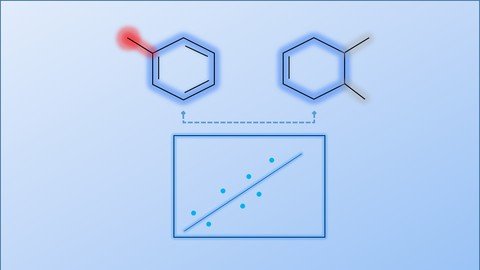Qsar Modeling – Principles And Practice

Free Download Qsar Modeling – Principles And Practice
Published 9/2023
MP4 | Video: h264, 1280×720 | Audio: AAC, 44.1 KHz
Language: English | Size: 935.93 MB | Duration: 3h 37m
Learn QSAR modeling in Computer-Aided Drug Design (CADD) and obtain practical skills for performing QSAR Studies.
What you’ll learn
Understanding the principles of QSAR modeling in Drug Design.
Practical skills in developing and validating QSAR models using various methods and techniques.
Planning, executing and reporting QSAR studies for publication or projects.
Performing virtual screening using QSAR models.
Improved Computer-Aided Drug Design (CADD) skills and knowledge such as planning and executing workflows.
Requirements
A very basic knowledge in drug design or any related field such as medicinal chemistry or bioinformatics.
Description
In this course you will learn the subject of Quantitative Structure-Activity Relationship (QSAR) modeling in Computer-Aided Drug Design (CADD). You will obtain practical skills to develop QSAR models on your own, which will be a valuable tool and a great addition for your skills set. In particular, for Drug Design, Cheminformatics, Bioinformatics or related fields practitioners. This course also explains key concepts in machine learning, which is involved in developing QSAR models. In the initial sections, the theoretical aspects of QSAR modeling are explained which include the chemical and statistical knowledge required for performing QSAR. Following the initial theoretical sections, the practical sections will involve performing practical QSAR experiments using real QSAR datasets. You will be provided all the datasets so you can follow along the experiments. A free QSAR modeling software will be used throughout the course which is modern and efficient for all the required tasks. In the first experiment, each step in the QSAR modeling process will be explained and performed in details. In the subsequent experiments, new concepts will be introduced including using automatic descriptor selection methods, using non-linear regression algorithms and performing virtual screening with QSAR models. In those practical sections, each concept will be explained theoretically first then it will be demonstrated in a practical experiment. The subjects of the experiments are as follow:Experiment 1: Developing a QSAR model (MLR method) step by step in details.Experiment 2: Developing a QSAR model using fingerprints and the PLS method.Experiment 3: Developing a QSAR model using a non-linear method (kNN).Experiment 4: Developing a QSAR model with automatic descriptor selection methods.Experiment 5: Performing virtual screening on a database using a QSAR model. In the final section, planning, executing and reporting QSAR studies will be explained, and general guidelines for proceeding in QSAR analysis will be given, as well as general tips on how to successfully publish a QSAR study. This will further bring together all the theoretical and practical knowledge obtained previously to give you a clear view and efficiency in performing QSAR studies. Overall, this course is intended to explain the subject of QSAR and grant practical skills for performing QSAR modeling studies.
Overview
Section 1: Course Overview
Lecture 1 Course Overview & Structure
Section 2: Introduction
Lecture 2 Main Concepts of QSAR
Lecture 3 Molecular Descriptors
Section 3: Regression Analysis (Theoretical)
Lecture 4 Regression Analysis Overview
Lecture 5 Regression Parameters
Lecture 6 Model Validation
Section 4: QSAR Model Development (Practical)
Lecture 7 QSAR Modeling Workflow
Lecture 8 Dataset Preparation
Lecture 9 Descriptors Calculation
Lecture 10 Dataset Division
Lecture 11 Model Building
Lecture 12 Model Analysis
Section 5: QSAR Modeling with PLS (Practical)
Lecture 13 PLS Method Overview
Lecture 14 Model Development with PLS
Section 6: Non-Linear QSAR Modeling (Practical)
Lecture 15 Non-Linear QSAR Methods Overview
Lecture 16 Model Development with The kNN Method
Section 7: Automatic Descriptor Selection (Practical)
Lecture 17 Descriptor Selection Methods
Lecture 18 Descriptor Selection Experiment
Section 8: QSAR-Based Virtual Screening
Lecture 19 Virtual Screening with QSAR
Lecture 20 Virtual Screening Experiment
Section 9: Planning & Reporting QSAR Studies
Lecture 21 Planning a QSAR Study
Lecture 22 Model Reporting & Publishing
Researchers or students in drug design, medicinal chemistry, cheminformatics, bioinformatics or any related field.
Homepage
https://www.udemy.com/course/qsar-modeling-principles-and-practice/
DONWLOAD FROM RAPIDGATOR
ftdbg.Qsar.Modeling.Principles.And.Practice.rar.html
DOWNLOAD FROM NITROFLARE
ftdbg.Qsar.Modeling.Principles.And.Practice.rar
Fikper
ftdbg.Qsar.Modeling.Principles.And.Practice.rar.html